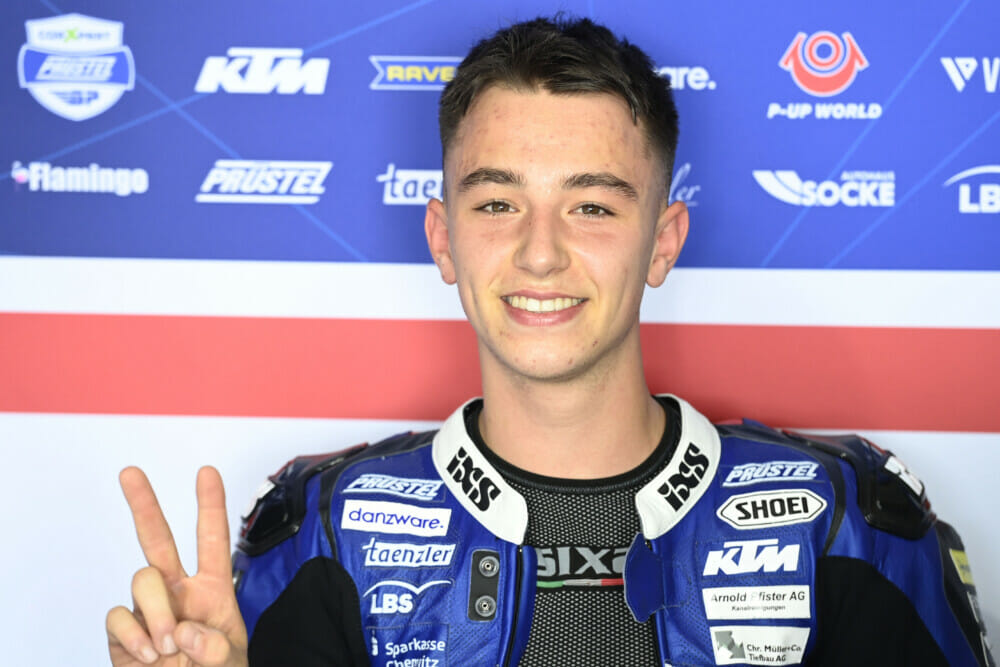Cycle News In The Paddock
COLUMN
When Fun Isn’t So Funny
Falling off motorcycles is not funny. And yet somehow it often is. Provided you can get up, dust yourself down, and walk away.
If you doubt this, you have only to revisit the “Flying W” segment of the classic On Any Sunday film to be reminded of the black humor. Or listen to tales over the bar at club night.
Some time ago, I essayed a piece seeing the funny side of the newly released grand prix crash statistics for the year and got a kicking. “How dare Mr. Scott laugh at people who risk their all to entertain us race fans.”
I take the point. But two of my own. Firstly, that I only laugh if the victim is also laughing, which is more often than you might think. And secondly, they’re not racing to entertain the fans. They have their own reasons. We just happen to be able to watch.
So, open the inbox, and there is the latest from MotoGP.com: Falls 2021. I contemplate an at least partially happy half-hour’s browsing.
I note that there were 950 crashes recorded in 2021, up on last year’s 722, but over 18 rounds, rather than just 15 last year (14 for the premier class), and happily down on the 1126 in 2017.
Also, that in spite of missing four rounds, Marc Marquez was a strong challenger for the most crashes. His 22 was outranked only by KTM’s Iker Lecuona.
But humor is absent, because 2021 was a pretty dreadful year.
Fate struck at the lower echelons, the classrooms of Dorna’s “Road to MotoGP,” where from the start of 2021 the lower age limit was dropped to just 10 years old. The new kids in the FIM MiniGP series ride 155.5cc four-speed Ohvale bikes on karting tracks, and slot in below the various feeder series—CEV Repsol Moto3 “Junior World Championship,” Red Bull Rookies Cup and the various national Talent Cups.
Typically, in these junior races, as in Moto3, gangs of 15 or more circulate on the ragged edge within touching distance. It’s scary. One down, and it’s pure chance if he or she doesn’t take several more with them. What happens next is blind luck. In the Moto3 race at COTA, by sheer miracle, Pedro Acosta, Jeremy Alcoba and Andrea Migno collided at top speed, and walked away unhurt.
It’s not always like that.
The 2021 victims were 18-year-old Jason Dupasquier, a Moto3 rider killed in qualifying for the Italian GP at Mugello, 14-year-old Hugo Millan at Aragon Motorland in a European Talent Cup round and 15-year-old Supersport 300 rider Dean Berta Vinales, at Jerez.

In each case, the rider fell, and was then hit by at least one following rider. This is how most racing fatalities occur. It’s the one thing safety equipment cannot mitigate.
How to split up these lethal groups? Allowing more tuning would create a difference that good riders could exploit. Engines with narrower power bands (like the old two-strokes) would be more difficult to ride, giving better riders the means to escape from lesser talented rivals presently able to stay with them.
But this goes against everything Dorna have done in racing over the past 10 years and more. The full thrust of regulations in every class, from MiniGP to MotoGP, has been standardization of equipment, specifically electronics and tires, and dumbing down the technology. We have a generation of bikes with very similar overall performance. Identical in Moto2, and in those one-make junior talent cups.
The outer limits have been brought back within reach of more ordinary mortals, and it is no wonder that the racing is so very (often terrifyingly) close.
It’s a great show. But it can be argued that by putting show business above other considerations, Dorna and the FIM are neglecting their duty of care. For while adults must be trusted to take responsibility for their own safety, extending this facility to those not yet considered old enough to vote, or (at the most junior level) even to have criminal responsibility, needs to be questioned.
A scrambled Permanent Bureau meeting in October rushed through some amelioration: the most significant being raised age limits pretty much across the board (though not for the 10-year-olds), and marginally reduced grid numbers, which is at least something. Though it is hard to understand why from 2023 Moto3 riders in the world championship will have to be 18 or over, but it is still somehow acceptable for 14-year-olds to race on the same tracks on essentially the same bikes in the lower series.
And thereafter? Back to trusting in blind luck.
I’m sure all readers will join me in repeating condolences to the bereaved families, and in wishing riders still suffering (especially Marc Marquez, battling double vision after suffering concussion) a speedy recovery. Along with wishes for a happier new year. CN
Click here to read the In The Paddock Column in the Cycle News Digital Edition Magazine.
Click here for all the latest MotoGP news.
